COT Speculators drop British pound sterling bets to lowest level in 76-weeks

Invest Macro 22.11.2021 11:46
November 20, 2021
By InvestMacro | COT | Data Tables | COT Leaders | Downloads | COT Newsletter
Here are the latest charts and statistics for the Commitment of Traders (COT) data published by the Commodities Futures Trading Commission (CFTC).
The latest COT data is updated through Tuesday November 16th 2021 and shows a quick view of how large traders (for-profit speculators and commercial entities) were positioned in the futures markets. All currency positions are in direct relation to the US dollar where, for example, a bet for the euro is a bet that the euro will rise versus the dollar while a bet against the euro will be a bet that the euro will decline versus the dollar.
Highlighting the COT Currency data this week is the second straight decline in British pound sterling speculative positions. The pound sterling speculator contracts dropped sharply for the second consecutive week this week and have now fallen by a total of -46,646 contracts over just this two-week time period. These declines have pushed the overall speculative position into a bearish sentiment level of -31,599 contracts which marks the lowest standing of the past seventy-six weeks, dating back to June 2nd of 2020. The GBPUSD currency pair has been under pressure since the middle of October and fallen from around 1.3800 exchange rate to just above the 1.3435 level currently, a drop of almost 400 pips.
Data Snapshot of Forex Market Traders | Columns Legend
Nov-16-2021
OI
OI-Index
Spec-Net
Spec-Index
Com-Net
COM-Index
Smalls-Net
Smalls-Index
EUR
705,698
86
-3,826
34
-26,985
68
30,811
25
JPY
252,897
91
-93,126
10
115,758
94
-22,632
1
GBP
207,099
43
-31,599
51
41,182
54
-9,583
36
MXN
170,102
33
-47,655
2
46,127
99
1,528
50
AUD
166,688
57
-61,153
27
69,858
71
-8,705
31
CAD
148,955
30
8,709
62
-26,717
35
18,008
74
USD Index
59,387
88
34,908
86
-40,455
7
5,547
77
RUB
52,624
58
22,625
67
-23,936
31
1,311
70
CHF
49,320
27
-8,889
54
18,767
52
-9,878
34
NZD
42,945
30
13,965
95
-15,521
6
1,556
70
BRL
31,767
32
-15,698
48
15,743
54
-45
66
Bitcoin
13,648
78
-1,478
69
357
0
1,121
23
US Dollar Index Futures:
The US Dollar Index large speculator standing this week was a net position of 34,908 contracts in the data reported through Tuesday. This was a weekly lowering of -540 contracts from the previous week which had a total of 35,448 net contracts.
This week’s current strength score (the trader positioning range over the past three years, measured from 0 to 100) shows the speculators are currently Bullish-Extreme with a score of 86.0 percent. The commercials are Bearish-Extreme with a score of 7.4 percent and the small traders (not shown in chart) are Bullish with a score of 77.2 percent.
Free Reports:
Top 5 Companies Added to Our Stock Watch List this Quarter - Here are the Stock Symbols that stood out so far in the fourth quarter of 2021.
Get our Weekly Commitment of Traders Reports - See where the biggest traders (Hedge Funds and Commercial Hedgers) are positioned in the futures markets on a weekly basis.
US DOLLAR INDEX Statistics
SPECULATORS
COMMERCIALS
SMALL TRADERS
– Percent of Open Interest Longs:
80.8
3.4
12.8
– Percent of Open Interest Shorts:
22.0
71.5
3.5
– Net Position:
34,908
-40,455
5,547
– Gross Longs:
47,959
2,000
7,621
– Gross Shorts:
13,051
42,455
2,074
– Long to Short Ratio:
3.7 to 1
0.0 to 1
3.7 to 1
NET POSITION TREND:
– COT Index Score (3 Year Range Pct):
86.0
7.4
77.2
– COT Index Reading (3 Year Range):
Bullish-Extreme
Bearish-Extreme
Bullish
NET POSITION MOVEMENT INDEX:
– 6-Week Change in Strength Index:
5.0
-2.7
-13.6
Euro Currency Futures:
The Euro Currency large speculator standing this week was a net position of -3,826 contracts in the data reported through Tuesday. This was a weekly reduction of -7,599 contracts from the previous week which had a total of 3,773 net contracts.
This week’s current strength score (the trader positioning range over the past three years, measured from 0 to 100) shows the speculators are currently Bearish with a score of 33.8 percent. The commercials are Bullish with a score of 68.1 percent and the small traders (not shown in chart) are Bearish with a score of 25.4 percent.
EURO Currency Statistics
SPECULATORS
COMMERCIALS
SMALL TRADERS
– Percent of Open Interest Longs:
28.1
57.3
12.8
– Percent of Open Interest Shorts:
28.6
61.1
8.4
– Net Position:
-3,826
-26,985
30,811
– Gross Longs:
198,181
404,266
90,261
– Gross Shorts:
202,007
431,251
59,450
– Long to Short Ratio:
1.0 to 1
0.9 to 1
1.5 to 1
NET POSITION TREND:
– COT Index Score (3 Year Range Pct):
33.8
68.1
25.4
– COT Index Reading (3 Year Range):
Bearish
Bullish
Bearish
NET POSITION MOVEMENT INDEX:
– 6-Week Change in Strength Index:
5.7
-5.2
-0.0
British Pound Sterling Futures:
The British Pound Sterling large speculator standing this week was a net position of -31,599 contracts in the data reported through Tuesday. This was a weekly lowering of -19,506 contracts from the previous week which had a total of -12,093 net contracts.
This week’s current strength score (the trader positioning range over the past three years, measured from 0 to 100) shows the speculators are currently Bullish with a score of 51.2 percent. The commercials are Bullish with a score of 54.0 percent and the small traders (not shown in chart) are Bearish with a score of 35.8 percent.
BRITISH POUND Statistics
SPECULATORS
COMMERCIALS
SMALL TRADERS
– Percent of Open Interest Longs:
24.4
61.4
11.3
– Percent of Open Interest Shorts:
39.6
41.5
15.9
– Net Position:
-31,599
41,182
-9,583
– Gross Longs:
50,443
127,197
23,322
– Gross Shorts:
82,042
86,015
32,905
– Long to Short Ratio:
0.6 to 1
1.5 to 1
0.7 to 1
NET POSITION TREND:
– COT Index Score (3 Year Range Pct):
51.2
54.0
35.8
– COT Index Reading (3 Year Range):
Bullish
Bullish
Bearish
NET POSITION MOVEMENT INDEX:
– 6-Week Change in Strength Index:
-8.3
9.2
-8.1
Japanese Yen Futures:
The Japanese Yen large speculator standing this week was a net position of -93,126 contracts in the data reported through Tuesday. This was a weekly increase of 12,225 contracts from the previous week which had a total of -105,351 net contracts.
This week’s current strength score (the trader positioning range over the past three years, measured from 0 to 100) shows the speculators are currently Bearish-Extreme with a score of 10.4 percent. The commercials are Bullish-Extreme with a score of 93.7 percent and the small traders (not shown in chart) are Bearish-Extreme with a score of 0.8 percent.
JAPANESE YEN Statistics
SPECULATORS
COMMERCIALS
SMALL TRADERS
– Percent of Open Interest Longs:
9.7
80.5
8.6
– Percent of Open Interest Shorts:
46.6
34.7
17.6
– Net Position:
-93,126
115,758
-22,632
– Gross Longs:
24,635
203,468
21,790
– Gross Shorts:
117,761
87,710
44,422
– Long to Short Ratio:
0.2 to 1
2.3 to 1
0.5 to 1
NET POSITION TREND:
– COT Index Score (3 Year Range Pct):
10.4
93.7
0.8
– COT Index Reading (3 Year Range):
Bearish-Extreme
Bullish-Extreme
Bearish-Extreme
NET POSITION MOVEMENT INDEX:
– 6-Week Change in Strength Index:
-18.4
15.5
-4.1
Swiss Franc Futures:
The Swiss Franc large speculator standing this week was a net position of -8,889 contracts in the data reported through Tuesday. This was a weekly rise of 8,154 contracts from the previous week which had a total of -17,043 net contracts.
This week’s current strength score (the trader positioning range over the past three years, measured from 0 to 100) shows the speculators are currently Bullish with a score of 54.4 percent. The commercials are Bullish with a score of 52.0 percent and the small traders (not shown in chart) are Bearish with a score of 34.3 percent.
SWISS FRANC Statistics
SPECULATORS
COMMERCIALS
SMALL TRADERS
– Percent of Open Interest Longs:
11.2
64.2
24.4
– Percent of Open Interest Shorts:
29.2
26.1
44.5
– Net Position:
-8,889
18,767
-9,878
– Gross Longs:
5,502
31,663
12,048
– Gross Shorts:
14,391
12,896
21,926
– Long to Short Ratio:
0.4 to 1
2.5 to 1
0.5 to 1
NET POSITION TREND:
– COT Index Score (3 Year Range Pct):
54.4
52.0
34.3
– COT Index Reading (3 Year Range):
Bullish
Bullish
Bearish
NET POSITION MOVEMENT INDEX:
– 6-Week Change in Strength Index:
11.9
-12.2
11.8
Canadian Dollar Futures:
The Canadian Dollar large speculator standing this week was a net position of 8,709 contracts in the data reported through Tuesday. This was a weekly rise of 3,605 contracts from the previous week which had a total of 5,104 net contracts.
This week’s current strength score (the trader positioning range over the past three years, measured from 0 to 100) shows the speculators are currently Bullish with a score of 62.3 percent. The commercials are Bearish with a score of 34.9 percent and the small traders (not shown in chart) are Bullish with a score of 74.0 percent.
CANADIAN DOLLAR Statistics
SPECULATORS
COMMERCIALS
SMALL TRADERS
– Percent of Open Interest Longs:
29.6
42.1
27.1
– Percent of Open Interest Shorts:
23.8
60.0
15.0
– Net Position:
8,709
-26,717
18,008
– Gross Longs:
44,147
62,689
40,389
– Gross Shorts:
35,438
89,406
22,381
– Long to Short Ratio:
1.2 to 1
0.7 to 1
1.8 to 1
NET POSITION TREND:
– COT Index Score (3 Year Range Pct):
62.3
34.9
74.0
– COT Index Reading (3 Year Range):
Bullish
Bearish
Bullish
NET POSITION MOVEMENT INDEX:
– 6-Week Change in Strength Index:
29.6
-26.4
10.0
Australian Dollar Futures:
The Australian Dollar large speculator standing this week was a net position of -61,153 contracts in the data reported through Tuesday. This was a weekly gain of 2,271 contracts from the previous week which had a total of -63,424 net contracts.
This week’s current strength score (the trader positioning range over the past three years, measured from 0 to 100) shows the speculators are currently Bearish with a score of 27.1 percent. The commercials are Bullish with a score of 71.0 percent and the small traders (not shown in chart) are Bearish with a score of 31.2 percent.
AUSTRALIAN DOLLAR Statistics
SPECULATORS
COMMERCIALS
SMALL TRADERS
– Percent of Open Interest Longs:
18.5
67.2
11.8
– Percent of Open Interest Shorts:
55.1
25.3
17.1
– Net Position:
-61,153
69,858
-8,705
– Gross Longs:
30,760
112,044
19,744
– Gross Shorts:
91,913
42,186
28,449
– Long to Short Ratio:
0.3 to 1
2.7 to 1
0.7 to 1
NET POSITION TREND:
– COT Index Score (3 Year Range Pct):
27.1
71.0
31.2
– COT Index Reading (3 Year Range):
Bearish
Bullish
Bearish
NET POSITION MOVEMENT INDEX:
– 6-Week Change in Strength Index:
27.1
-29.0
24.4
New Zealand Dollar Futures:
The New Zealand Dollar large speculator standing this week was a net position of 13,965 contracts in the data reported through Tuesday. This was a weekly boost of 1,083 contracts from the previous week which had a total of 12,882 net contracts.
This week’s current strength score (the trader positioning range over the past three years, measured from 0 to 100) shows the speculators are currently Bullish-Extreme with a score of 94.7 percent. The commercials are Bearish-Extreme with a score of 6.5 percent and the small traders (not shown in chart) are Bullish with a score of 69.7 percent.
NEW ZEALAND DOLLAR Statistics
SPECULATORS
COMMERCIALS
SMALL TRADERS
– Percent of Open Interest Longs:
61.4
24.1
11.5
– Percent of Open Interest Shorts:
28.9
60.2
7.8
– Net Position:
13,965
-15,521
1,556
– Gross Longs:
26,388
10,349
4,923
– Gross Shorts:
12,423
25,870
3,367
– Long to Short Ratio:
2.1 to 1
0.4 to 1
1.5 to 1
NET POSITION TREND:
– COT Index Score (3 Year Range Pct):
94.7
6.5
69.7
– COT Index Reading (3 Year Range):
Bullish-Extreme
Bearish-Extreme
Bullish
NET POSITION MOVEMENT INDEX:
– 6-Week Change in Strength Index:
9.9
-11.8
19.8
Mexican Peso Futures:
The Mexican Peso large speculator standing this week was a net position of -47,655 contracts in the data reported through Tuesday. This was a weekly gain of 752 contracts from the previous week which had a total of -48,407 net contracts.
This week’s current strength score (the trader positioning range over the past three years, measured from 0 to 100) shows the speculators are currently Bearish-Extreme with a score of 1.5 percent. The commercials are Bullish-Extreme with a score of 98.8 percent and the small traders (not shown in chart) are Bearish with a score of 49.5 percent.
MEXICAN PESO Statistics
SPECULATORS
COMMERCIALS
SMALL TRADERS
– Percent of Open Interest Longs:
41.1
55.3
3.1
– Percent of Open Interest Shorts:
69.2
28.2
2.2
– Net Position:
-47,655
46,127
1,528
– Gross Longs:
69,984
94,074
5,245
– Gross Shorts:
117,639
47,947
3,717
– Long to Short Ratio:
0.6 to 1
2.0 to 1
1.4 to 1
NET POSITION TREND:
– COT Index Score (3 Year Range Pct):
1.5
98.8
49.5
– COT Index Reading (3 Year Range):
Bearish-Extreme
Bullish-Extreme
Bearish
NET POSITION MOVEMENT INDEX:
– 6-Week Change in Strength Index:
-5.5
5.6
-1.5
Brazilian Real Futures:
The Brazilian Real large speculator standing this week was a net position of -15,698 contracts in the data reported through Tuesday. This was a weekly decrease of -240 contracts from the previous week which had a total of -15,458 net contracts.
This week’s current strength score (the trader positioning range over the past three years, measured from 0 to 100) shows the speculators are currently Bearish with a score of 47.6 percent. The commercials are Bullish with a score of 54.4 percent and the small traders (not shown in chart) are Bullish with a score of 66.3 percent.
BRAZIL REAL Statistics
SPECULATORS
COMMERCIALS
SMALL TRADERS
– Percent of Open Interest Longs:
26.7
64.6
8.0
– Percent of Open Interest Shorts:
76.1
15.0
8.2
– Net Position:
-15,698
15,743
-45
– Gross Longs:
8,468
20,507
2,545
– Gross Shorts:
24,166
4,764
2,590
– Long to Short Ratio:
0.4 to 1
4.3 to 1
1.0 to 1
NET POSITION TREND:
– COT Index Score (3 Year Range Pct):
47.6
54.4
66.3
– COT Index Reading (3 Year Range):
Bearish
Bullish
Bullish
NET POSITION MOVEMENT INDEX:
– 6-Week Change in Strength Index:
-17.9
19.3
-12.9
Russian Ruble Futures:
The Russian Ruble large speculator standing this week was a net position of 22,625 contracts in the data reported through Tuesday. This was a weekly advance of 1,922 contracts from the previous week which had a total of 20,703 net contracts.
This week’s current strength score (the trader positioning range over the past three years, measured from 0 to 100) shows the speculators are currently Bullish with a score of 66.9 percent. The commercials are Bearish with a score of 30.7 percent and the small traders (not shown in chart) are Bullish with a score of 70.2 percent.
RUSSIAN RUBLE Statistics
SPECULATORS
COMMERCIALS
SMALL TRADERS
– Percent of Open Interest Longs:
57.7
37.7
4.6
– Percent of Open Interest Shorts:
14.7
83.2
2.1
– Net Position:
22,625
-23,936
1,311
– Gross Longs:
30,357
19,849
2,418
– Gross Shorts:
7,732
43,785
1,107
– Long to Short Ratio:
3.9 to 1
0.5 to 1
2.2 to 1
NET POSITION TREND:
– COT Index Score (3 Year Range Pct):
66.9
30.7
70.2
– COT Index Reading (3 Year Range):
Bullish
Bearish
Bullish
NET POSITION MOVEMENT INDEX:
– 6-Week Change in Strength Index:
5.2
-3.3
-20.9
Bitcoin Futures:
The Bitcoin large speculator standing this week was a net position of -1,478 contracts in the data reported through Tuesday. This was a weekly reduction of -11 contracts from the previous week which had a total of -1,467 net contracts.
This week’s current strength score (the trader positioning range over the past three years, measured from 0 to 100) shows the speculators are currently Bullish with a score of 68.7 percent. The commercials are Bullish with a score of 71.4 percent and the small traders (not shown in chart) are Bearish with a score of 22.9 percent.
BITCOIN Statistics
SPECULATORS
COMMERCIALS
SMALL TRADERS
– Percent of Open Interest Longs:
63.4
5.0
14.7
– Percent of Open Interest Shorts:
74.2
2.4
6.5
– Net Position:
-1,478
357
1,121
– Gross Longs:
8,649
678
2,008
– Gross Shorts:
10,127
321
887
– Long to Short Ratio:
0.9 to 1
2.1 to 1
2.3 to 1
NET POSITION TREND:
– COT Index Score (3 Year Range Pct):
68.7
71.4
22.9
– COT Index Reading (3 Year Range):
Bullish
Bullish
Bearish
NET POSITION MOVEMENT INDEX:
– 6-Week Change in Strength Index:
0.9
-20.8
4.5
Article By InvestMacro – Receive our weekly COT Reports by Email
*COT Report: The COT data, released weekly to the public each Friday, is updated through the most recent Tuesday (data is 3 days old) and shows a quick view of how large speculators or non-commercials (for-profit traders) were positioned in the futures markets.
The CFTC categorizes trader positions according to commercial hedgers (traders who use futures contracts for hedging as part of the business), non-commercials (large traders who speculate to realize trading profits) and nonreportable traders (usually small traders/speculators) as well as their open interest (contracts open in the market at time of reporting).See CFTC criteria here.













 BeInCrypto (BeIn News Academy Ltd), we're writing about crypto. 13.02.2021 08:32
BeInCrypto (BeIn News Academy Ltd), we're writing about crypto. 13.02.2021 08:32














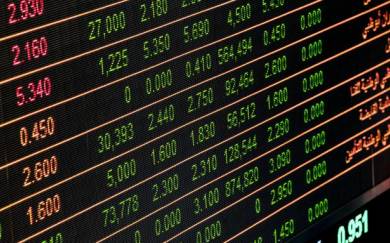










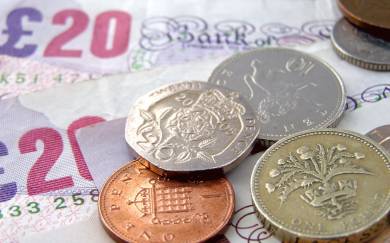
















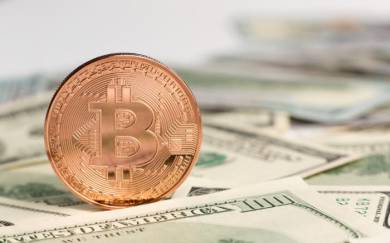





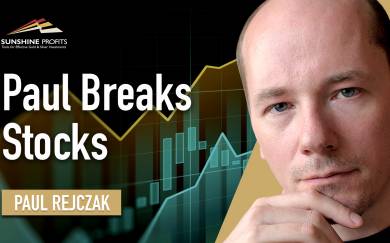














 Saxo Bank 19.11.2021 10:43
Saxo Bank 19.11.2021 10:43














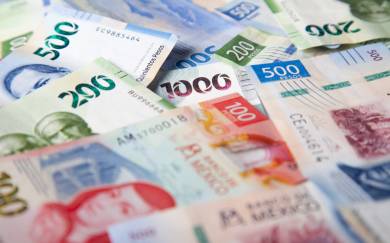


















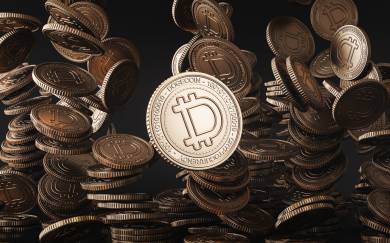







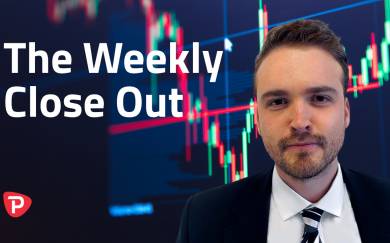





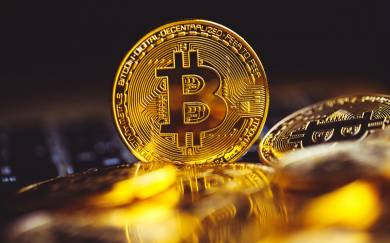









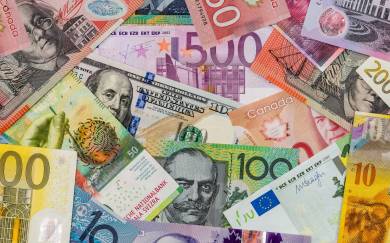












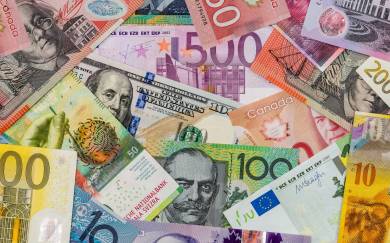







































































 Mikołaj Marcinowski 01.03.2022 18:51
Mikołaj Marcinowski 01.03.2022 18:51










































 Conotoxia Comments 10.11.2022 14:20
Conotoxia Comments 10.11.2022 14:20

 Kamila Szypuła 13.12.2022 11:37
Kamila Szypuła 13.12.2022 11:37


 Franklin Templeton 22.12.2022 20:45
Franklin Templeton 22.12.2022 20:45

 Santa Zvaigzne Sproge 02.02.2023 14:34
Santa Zvaigzne Sproge 02.02.2023 14:34


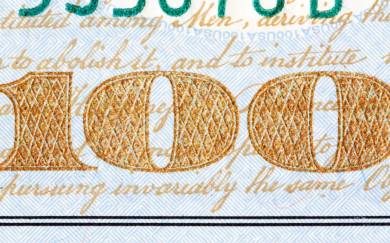
 David Mann 10.02.2023 11:22
David Mann 10.02.2023 11:22



 Ed Moya 28.06.2023 08:31
Ed Moya 28.06.2023 08:31

 Craig Erlam 28.06.2023 09:00
Craig Erlam 28.06.2023 09:00



